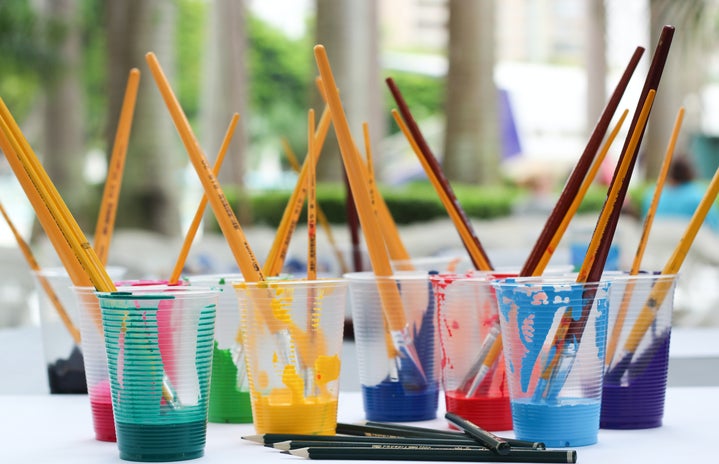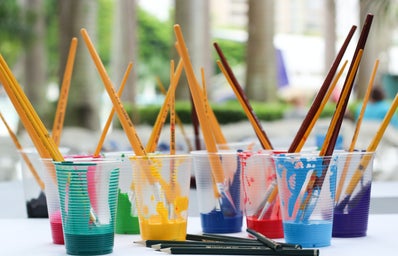Leonora Carrington paints herself in a dusty blue room. She imagines luxurious, gold curtains, sleek, brown tiles and a flying rocking horse. Outside, a white horse gallops freely between the pines. Carrington sits on the edge of a blue Victorian chair with velvet cushions. Her long mane of hair stands away from her face, as if she has been electrocuted. Her porcelain skin is the creamy white of the rocking horse. Carrington wears the colors of the world outside her window; her shirt is the green of the grass; her jodhpurs are the stark white of the horse. She points to a lactating hyena with piercing blue eyes. Its coat is the auburn of Carrington’s hair and shirt. Its feet are small and pointed, just like her boots. The shadow connects her and the hyena. It looks like a third horse.
Carrington’s “Self-Portrait” is dreamlike, whimsical, and nostalgic. Was this her childhood bedroom? Was that her childhood rocking horse? She creates a fairytale where toys fly, and animals are our friends. The picturesque site out of the window looks like the scene just before the “happily ever after” ending of childhood fables.
But there is also something unsettling, something lurking below the realm of fairytale. Look at Carrington’s face, her furrowed brows, her concerned gaze, her just parted red lips. She seems stuck, frozen. So too does the hyena, its eyes staring out and legs just perfectly mid-step. As the white horse roams freely, the Inside world is uncomfortably posed, trapped in time and space.
I know that feeling of being stuck. I often have this dream where I am supposed to be somewhere, but I can’t move, can’t get myself to get dressed, can’t leave my room. I am frozen, helplessness. I used to think this dream was a reaction to my habitual tardiness. But it mimics a level of entrapment that dwarfs the sensation of merely running late.
I first saw “Self-Portrait” during a class in surrealist art. I looked at work after work of pubescent girls with hiked up skirts and doe eyes. They pursed their lips in orgasmic pleasure or stared off, lost in sexual reverie. For artists like Picasso, Munch and Gaugin, these virgin girls were a vehicle the untainted human psyche. They were a romanization of our shared sexual nature. Then, in 1938, came Carrington’s surrealist master piece. She lets us in to her inner world and disappointed those male artists—her interior was not dripping with sex. Instead, she portrayed herself as one with the tamed, gendered beast, the stylized animal. There is potential for creative freedom, for the horse to roam freely, but on some level, she would always be trapped in her Victorian cell.
Carrington released women of the duty as the subject. “You won’t find what you’re looking for up that girls skirt or in her starry eyes,” she seems to say. Her childhood fantasies are all about the natural world and escaping her entrapment. Carrington is stuck in dreams too.
Her world is one where the line between the free and tamed woman is just as blurred as that between fact and fiction, interior and exterior.
Now, I wake up to my “stuck” dreams and think of Carrington’s room. My walls might not be dusty blue, my curtains wouldn’t be gold, maybe a hyena is not the animal I’d find by my side, but she was right about the sensation – the ceaseless sentiment that being a woman in this world means this interior juggling of creativity and confine; It is being both the girl and the women, the beast and the mother.
This knowledge is not found between the virgin’s legs.


